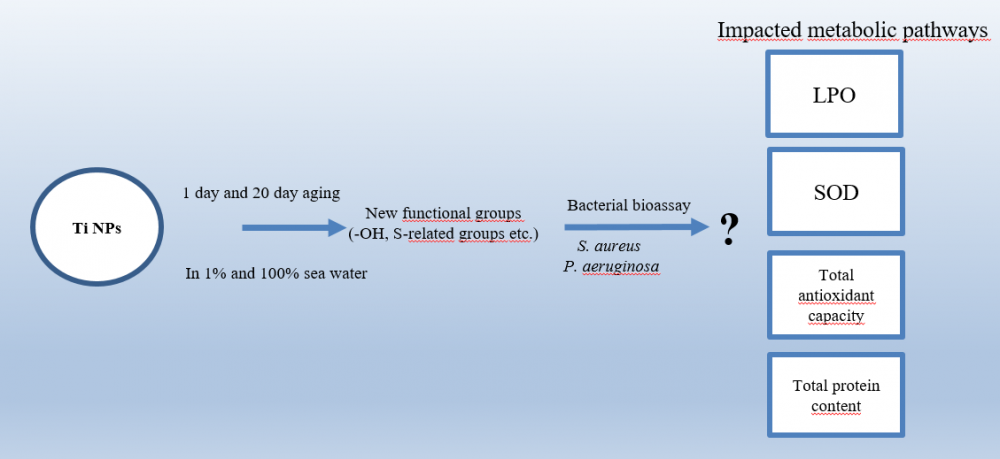JOURNAL 1648
Journal of Chemical Metrology
Year: 2020 Issue: 2 July-December
p.114 - 124
Viewed 2652 times.
GRAPHICAL ABSTRACT

ABSTRACT
To assess the fate and behavior of engineered nanoparticles in the aquatic environment, it is crucial to conduct appropriate bacterial bioassay procedure. However, test conditions of bacterial bioassay are limitedly investigated; especially in the field of environmental media chemistry or aging of nanoparticles which interfere the procedure. For this purpose, TiO2 nanoparticles were treated with different test conditions by keeping them in 1% and 100% seawater for one day and 20 days. The bacterial bioassay of treated nanoparticles towards gram-negative (Pseudomonas aeruginosa) and gram-positive (Staphylococcus aureus) bacteria were examined, as well as the mechanism by biochemical responses of bacteria and physicochemical properties of TiO2 nanoparticles. The viability response of tested bacteria reduced remarkably in seawater concentration, while treatment (aging) duration of tested nanoparticles slightly affected the viability response of tested bacteria. Moreover, key events which affected the bioassay response were changed with the treatment duration and media concentration. The results also showed that aging duration and concentration of the media influenced the main physicochemical properties due to the alterations in surface from aging media compared to unaged ones.
KEYWORDS- Nanoparticles
- bacteria bioassay
- interference
- nanometrology
- surface analysis
- ecotoxocology